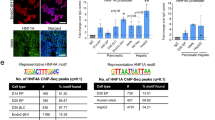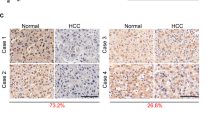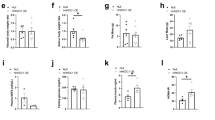Abstract
A possible role of hepatocyte nuclear factor 1 (HNF1) or HNF3, a predominant trans-acting factors of hepatic or pancreatic β-cells, was examined on the tissue specific interdependent expression of glucokinase (GK) in liver, H4IIE, HepG2, HIT-T15 and MIN6 cell line. The tissues or cell lines known to express GK showed abundant levels of HNF1 and HNF3 mRNA as observed in liver, H4IIE, HepG2, HIT-T15 and MIN6 cells, whereas they were not detected in brain, heart, NIH 3T3, HeLa cells. The promoter of glucokinase contains several HNF3 consensus sequences and are well conserved in human, mouse and rat. Transfection of the glucokinase promotor linked with luciferase reporter to liver or pancreatic β cell lines showed high interacting activities with HNF1 and HNF3, whereas minimal activities were detected in the cells expressing very low levels of HNFs. The binding of HNF1 or HNF3 to the GK promoter genes was confirmed by electrophoretic mobility shift assay (EMSA). From these data, we propose that the expression of HNF1 and/or HNF3 may, in part, contribute to the tissue specific expression of GK.
Similar content being viewed by others
Article PDF
Author information
Authors and Affiliations
Rights and permissions
This is an Open Access article distributed under the terms of the Creative Commons Attribution Non-Commercial License (http://creativecommons.org/licenses/by-nc/3.0/) which permits unrestricted non-commercial use, distribution, and reproduction in any medium, provided the original work is properly cited.
About this article
This article is cited by
-
The human carcinoembryonic antigen (CEA) GPI anchor mediates anoikis inhibition by inactivation of the intrinsic death pathway
Oncogene (2008)
-
Regulation of insulin secretion, glucokinase gene transcription and beta cell proliferation by adipocyte-derived Wnt signalling molecules
Diabetologia (2007)



